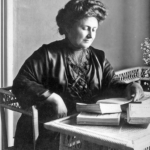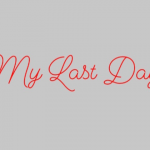Growing up, most denominations of currency had the face of someone I recognized. I do not mean that I had learned who these men were from history class; rather, that the men featured were similar to me (white men, of European descent). Forty four out of the forty five American presidents have been white men, and 81% of the sitting U.S. Congress are as well. I am a direct descendant of Rufus King, a white man, who signed the Declaration of Independence. Simply: America affirms my identity.
Likewise, the curriculum in my classes growing up never felt foreign to me. My high school and college English courses were crammed with authors to whom I can easily relate. My high school exposure to feminism came from a man named Henrik Ibsen, and my first exposure to the concept of institutional racism came from a white author, Harper Lee.
As recently as a few weeks ago, I had attributed this familiar atmosphere as a lead cause in my insatiable reading habits, why I always excelled in English courses, and even why I chose my profession. Now, if only I can do the same for my diverse student population, they all will become ravenous readers, prolific writers, and astute college graduates. Armed with my personal epiphany, this teaching thing should be a breeze.
Educators are familiar with the concept of the achievement gap. From informal conversations, to workshops, and our time studying pedagogy, academic professionals need not be reminded of the documented disparities between ethnic and racial groups. However, this Edweek article can provide a quick snapshot: “82.7 percent of Asian students and 78.4 percent of white students in the class of 2008 graduated on time, that was the case for only 57.6 percent of Hispanic, 57 percent of black and 53.9 percent of American Indian students.” Taking in these types of statistics and my own experience, I felt like I had a firm grasp on concrete things I can and am doing in my classroom every day to try to tighten these disparities.
When I saw there was a recent episode of the 3 P’s in a Pod podcast titled “Culturally Responsive Teaching with Zaretta Hammond,” I was excited to listen. There would be, I hoped, even more concrete ways I can augment my approach to classroom culture.
The conversation could not have been more helpful, but not for reasons you might expect. Primarily, I realized that “Culturally Responsive Teaching” is a term to which I had yet to address in my curriculum. In fact, Hammond references “Multicultural Education” and “Social Justice Education.” And these two terms come much closer to what I’ve been attempting in my classroom to address my reductive analysis of a complex problem.
I had conflated all 3 terms. Before I attempt to paraphrase what “Culturally Responsive Teaching” actually is, let me explain the other two terms. “Multicultural Education” is the concept of incorporating diverse cultures in a quantitative representation. So, this might be using names like “Juan,” “Guadalupe” or “Zamar” instead of “Tom” “Jane” or “John” in grammar examples, or this may be ensuring there are an array of races represented in the poets read during the poetry unit. This is about affirmation and representation. Social Justice Education, on the other hand, is the concept of picking content that allows students to discuss societal and systemic oppression or problems. I do this with frequent annotation practices with Kelly Gallagher’s Article of The Week.
In subsequent searches through Youtube, I saw Hammond express that these are valuable to a classroom. However, she also states “I don’t care how affirmed I feel; it’s not going to tell me how long vowels work.”
Her point is crystal clear. If we allow cultural inequities to continue, we are not responding to cultural inequities at all. Students must progress, and they need to burgeon. It is a disservice to make them feel affirmed but do nothing to grow their cognitive development.
Students, Hammond posits, can be classified in two ways: independent and dependent learners. Hammond continues to note that minority students are disproportionately considered dependent learners through the time they graduate high school. My take away from her discussion here was that students are naturally dependent learners. They need teachers to explain things. But, we need to nudge all students to become independent learners in their time with us. Yes, we guide, but we cannot carry the entirety of the cognitive load in the classroom. Further – our class period is not enough time. Human brains always have the capacity to learn, and dependent learners can only learn what we can funnel into them. Conversely, independent learners can keep learning without us, and they will do so.
Our curriculum should be more than us trying to download facts into students brains. Our curriculum has to train students to be able to learn even when no teacher is around.
For further discussion on why this cognitive development is classified as “Culturally Responsive,” I invite you to listen to the quick 24 minute aforementioned podcast, purchase Zaretta Hammond’s book Culturally Responsive Teaching and The Brain, or visit her own website’s resource page.
Being aware of my comfort and affirmation growing up in America, and the very white curriculum I received may be important to my confidence. Certainly, being cognizant of my classroom makeup and making all students feel welcome and affirmed is a good thing. But listening to Zaretta Hammond has opened my eyes, and I am ready to begin my journey to become a more culturally responsive teacher. While Great Grandpa Rufus contributed to our country’s Declaration of Independence, I will lead my students to declare their own.
How about you all? Did you also conflate these terms? Do you excel in cognitive development and creating independent learners? What tips can you share with us all? Comment below so we can all takes some first steps together!










Comments 2
Hi!
I love that you define the terms Culturally Responsive Teaching and Multicultural Education. Both are important concepts to be aware of in our classrooms. I remember my favorite graduate level class was Multicultural Education. Dr. Christine Clark enlightened me each Wednesday evening for three and a half hours with her wisdom, insights, and experiences. My biggest takeaway from the course was about elbow macaroni. She explained that to many elbow macaroni is often used in elementary craft projects. i remembered making my mother a necklace for a holiday gift with fond memories. Dr. Clark explained that while many see this project as worthwhile, for many of our students and their families, elbow macaroni is dinner, not a craft supply. This has stuck with me for many years. As I plan lessons, I often think about elbow macaroni. My school requires honors kids to purchase their own novels, and I struggle with this policy. While I want my students to annotate their own books, I think about the necklace I so proudly presented to my mom. How often am I taking dinner off the table in order for my kids to write in their own books? Thank you for this post! Very thought provoking and reflective!
I had this same conundrum this year for the first time with F451. It was the first time I had required purchases…. luckily there were a few teachers who supported me and the kids who couldn’t get the book.
While it was great to be able to loan a copy out…. Nearly all of the kids annotated the book themselves, so I felt like the kids and I were constantly reminded throughout the process that they had not annotated the book because they did not own it. Of course I didn’t penalize these students, but I’m sure the experience wasn’t as simple or fun for them as their peers.